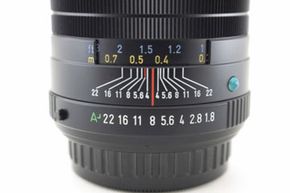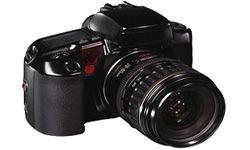When you want to take sharply focused pictures, your camera needs as much light as possible. So, in dimly lit areas, it's best to choose a low f-stop number, opening the aperture to its biggest size to let in more light.
You can use your camera's manual mode (M) or aperture priority mode (AV, or aperture value) to take full control of your camera's aperture [source: Cincotta]. In addition to controlling how much light enters the camera, changing the size of the aperture also changes image depth.
As you tweak your camera's aperture, you're altering the lens' depth of field. Depth of field is another photography concept that's easily clouded by complicated mathematics and esoteric language, but, basically, it refers to how much of a scene is in focus.
When subjects both near and far are relatively crisp and sharp, many photographers say a scene has deep depth of field. Shallow depth of field indicates that only part of a scene is in sharp focus.
Shallow depth of field is a powerful tool for making great pictures by drawing attention to specific aspects of a picture. For example, if you compose a portrait in which the subject's eyes are the only facial feature in focus, you're isolating the eyes and making them stand out in an arresting way that your viewers can't miss.
Lenses that boast a large maximum aperture, such as f/1.2 or f1/4, are best for creating extremely shallow depth of field. To accentuate this effect, it helps to be close to your subject [source: Golowczynski].
The reverse is true if you want deep depth of field. Many landscape photographers use high f-stops with small apertures in the range of f/16 or f/22, which helps keep objects in both the foreground and background in focus.
It's worth noting that the image quality of many lenses tends to deteriorate as you approach the extreme ends of the f-stop range. This is especially true of the telephoto lens, because they're often so complex.
The fastest way to understand how to make f-stops work for you is to experiment. Pick one subject and shoot it using different f-stop settings. Review the images to see how sharpness and brightness change from image to image. Regardless of the kinds of subjects you choose to photograph, understanding f-stops, aperture and depth of field can help you make a mundane scene totally marvellous.



